Liza Rodman's Blog
July 7, 2022
CANCELED IN PROVINCETOWNA defamation too far …..
Last Tuesday afternoon the paperback launch of our book The Babysitter: My Summers with a Serial Killer (Simon & Schuster, March 2021) was canceled at the 11th hour by East End Books in Provincetown, MA, after a series of online bullying, insults, veiled threats, and outright lies about the book and its authors appeared in our email and across social media. The comments accused us of daring to celebrate our book in the town where the story takes place because members of Tony Costa’s family still live locally.
I want to be clear here. These self-named “townies” are friends and family members of Tony Costa, a serial murderer, not the families of his victims. In a bit of deja vu, they once again closed ranks posting hundreds of comments (see link below) designed to intimidate and defame. In the end, they succeeded in pressuring East End Books to not only cancel our book launch but another upcoming book event on the same subject. This is a big problem and it’s called mob mentality.
Many of the commenters used the phrase “we protect our own.” Maybe so, but they wouldn’t “protect their own” in 1969 from Costa, a manipulative, charismatic “townie” himself who murdered multiple women right under their noses. According to over fifteen years of research uncovering interviews, court testimony, diaries, and media coverage, Costa’s friends and family repeatedly and deliberately stonewalled the police investigation. When it came our turn to ask questions fifty years later, those still living and engaged with the Costa family again circled their wagons and let it be known no one was to speak to us. One wonders: what are these people hiding?
Members of the Costa family have propagated a smear campaign toward this book and its authors since publication. They claim to have no idea who I am. Yet we contacted Costa’s ex-wife many times throughout the research and writing process. We thought it was important to keep the family abreast of our discoveries ahead of publication and to return several of Costa’s personal items we’d found in an obscure library archive. They refused all entreaties.
Now, they accuse me of fabricating my own childhood history for profit. How could they possibly claim to know the truth or fiction of my life?
I fully understand the far-reaching, unrelenting tentacles of past trauma. But very few have lived as traumatic a life as Costa’s family. Even after everything that happened, I completely understand a community that would strive to protect them. But, when that community seeks to maliciously malign my and my co-writer’s reputations through bullying and lies, that is a defamation too far.
We thought long and hard about outing some of these bullies here in this post but in the end, we decided just to share a link if you’re interested.
https://www.facebook.com/groups/provincetowncommunityspace/permalink/7610351172368304/
https://www.facebook.com/groups/provincetowncommunityspace/posts/7614907225246032/
We remain undeterred by the opinions of others who have no room in their lives for perspectives other than their own. We will continue to share our story.
LR & JJ
April 29, 2022
Read an excerpt from THE BABYSITTER
Tony was tired, now that it was all over. He’d never been so tired. Tired of everything—struggling to find work, scraping together the monthly payment to Avis, even taking the drugs—no, especially the drugs. He always seemed to be too high or too low—too many bennies or not enough. He couldn’t imagine quitting, but it was all so exhausting. He watched the beam from the Highland Lighthouse course above him. He could never seem to get ahead; someone was always preventing him from the success he deserved, success he was owed. Avis, his nagging mother, his various bosses, his three pesky kids, who hung on his back begging for treats he didn’t have. Christ! How tired he was of all of them!
Tony looked over at the gun, which had fallen on the ground earlier when he unzipped his pants. He picked up the gun; it was still warm. He ran his fingers down the barrel and over the handle. The urge became irresistible. He turned the gun, stared down the barrel, and pulled the trigger.
It clicked. He had run out of bullets.
April 19, 2022
Finding Inspiration
A writer never knows when her next story will present itself and get the creative juices flowing. In fact, sometimes the inspiration knocks not on the front door, but comes sneaking in the back when they’re wondering why in hell the doorbell rang if there’s no one there. Sometimes it comes when you’re sitting on the couch sipping wine with your best friend from college who suddenly announces, “Did I ever tell you I was babysat by a serial killer?” And sometimes it comes when you’re working on an entirely different project and a new one quietly says, “Ahem, excuse me, but I’m pretty damn fascinating too.”
That’s the story of how my second book, “Last Man on the Mountain: The Death of an American Adventurer on K2” (Norton, 2010), was born.
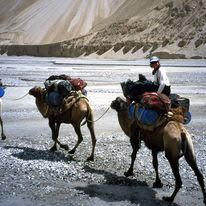 Jennifer riding camels into the north side of K2 (credit: Jeff Rhoads)
Jennifer riding camels into the north side of K2 (credit: Jeff Rhoads)It was 2002, and was once again I was headed to Pakistan to sit at the base of its infamous K2, at 28,250 feet, the second highest mountain in the world, and arguably, among its deadliest. I wasn’t going to climb the behemoth; I was going back to the mountain to continue my research and to make a documentary about the women who had climbed and perished on its grueling slopes. My first trip in 2000 had been nothing short of disaster because the team seemed more suited to starring roles in “Beavis and Butthead” and “Lord of the Flies” than men and women able and ready to tackle a mountain of K2’s rigors. I didn’t know that when we all gathered at JFK for the flights to Islamabad, but I had a dim foreboding soon after when I saw the copious amounts of alcohol they consumed on an otherwise dry airliner – a direct slap in the face to the flight attendants on our Pakistan International Airways plane, owned and operated by an Islamic country. It only got worse from there, including my falling into a crevasse and being grateful that I had been with one of the few stand-up men on the team, and not one of the violent drunks who I feared would have left me to die in its icy caverns. I still have nightmares that he did.
Anyway, it was a horrible trip and yet two years later I once again packed my duffels and headed to back K2. But this time I was going with trusted and loving friends, strong climbers, and culturally-sensitive travelers. It also helped the expedition’s dynamic that we were going into the south side of K2, rather than the far more remote north side as I had in 2000. That journey into the mountain took nearly a month between the airport and base camp and included buses, jeeps, camels, and a final twelve miles trekking in on the Qogir glacier. The south side approach in contrast, involves a short and spectacular flight from Islamabad to Skardu which threads through the mountains, and flies so close to eight-thousand-meter Nanga Parbat you can see individual crevasses cutting high into the slopes. From Skardu, jeeps take you another several hours to the end of the road in the tiny village of Askole and from there you hoist your pack and start walking. Some seventy miles later, you’re at the base of the mountain. It sounds (and is) arduous, but compared to the north side of K2, it’s casual.
During our long summer on K2, the team worked to establish high camps on the mountain, stocked them with food and gear for their eventual (and hoped for) summit bid, and watched for rare breaks in the weather. While the team toiled to climb the mountain, I worked at its base emailing and faxing (!!) our film team back in Los Angeles, interviewing other climbers at base camp, writing the story board for our documentary, and outlining the book that would expand on the film’s theme of the first five women who climbed the mountain, all of whom were dead. Most days by lunchtime my “office” work was done and I would spend the afternoon exploring the glacial moraine which surrounds the mountain and stretches into all directions as far as the eye can see and the foot can travel. Because K2 is shaped like a pyramid – long, straight, nearly unbroken ridges and slopes – everything that was ever on the mountain, eventually ends up at its base, including scores of dead climbers and their battered gear. Having a good eye for detritus that doesn’t belong where it is, I frequently found debris of expeditions past, most of it benign pieces of clothing or gear, but some of it utterly gruesome – chips of human bones and skulls, a severed foot in a boot, a torso “climbing” out of the glacier, and once, an entire body perfectly preserved by the elements, right down to its toe and finger nails. As horrific as the finding was, it could have been worse – because of the brutality of falling thousands of feet, the head almost always detaches from the body (it is the weakest link, after all). We identified the climber through his clothing as one of those killed seven years earlier, in 1995, when he fell from just below the summit to its base nearly twelve thousand feet below. There, snow and ice had buried him every year while the summer sun then exposed him. We wrapped his body in a nearby tent fragment and lowered him into a crevasse, saying a prayer as we always did when “burying” K2’s dead. My findings were so regular that Hector Ponce de Leon, our team leader and dear friend, started calling me the bone collector.
Indeed.
 Jennifer at K2 base camp (credit: Jeff Rhoads)
Jennifer at K2 base camp (credit: Jeff Rhoads)A short couple of weeks later I was again poking around the glacier, this time accompanied by my partner Jeff Rhoads, when I came upon a debris field of gear I instantly recognized as being decades older than anything I’d previously found – bits of a canvas tent, a chunk of a thermal sleeping bag, a rusted tin cup, a stainless steel matchbook, a dented Primus stove, a length of hemp rope. And there, in the middle of it all, was a human skeleton. Well, enough of it to identify it as human – ribs, pelvic bones, and remnants of leg and arm bones – ulna, radius, humerus, femur, tibia, fibula. And again, thankfully, no head, although there was a shock of long, white hair. I called out to Jeff, who came trotting through the ice towers carrying a glove. Seems he had been doing his own scavenging. And on the glove was written a name: WOLFE.
“Holy shit,” I said. “I can’t believe we found him.”
Dudley Francis Wolfe had been left for dead sixty three years earlier on the highest reaches of the mountain. He had climbed higher than any of his 1939 teammates besides their leader, Fritz Wiessner, but after five weeks in the so-called Death Zone above 25,000 feet, he hadn’t had the strength or the experience needed to get back down. Wiessner returned to the U.S. and, fearing condemnation for having abandoned a teammate, announced that Dudley had perished due to his own arrogance in climbing too high, that he had been “fat, lazy, and clumsy,” and, most damning of all, “a stubborn American millionaire” who had bought his way on the expedition and demanded to stay on the mountain until he had conquered the summit.
And over six decades later I sat in base camp, reading those defaming words while holding Dudley’s bones in my hands. Suddenly I looked up at the area where Wiessner had left him on the mountain, and thought, “Wait a minute. Arrogant and rich maybe, but no one gets there who is fat, lazy and clumsy,” especially without supplemental oxygen, Sherpas, and a lot of rope – none of which the 1939 team had.
“To the victor go the spoils.” Sure. But spoils are one thing. Now I knew history got the story wrong, that lie had become legend, and I was going to do something about it.
And I did; “Last Man on the Mountain” was published in 2010.
 Book cover photo taken by 1939 teammate, George Sheldon
Book cover photo taken by 1939 teammate, George SheldonYou just never know where your next inspiration will be found. But, I do hope you won’t have to travel half way around the world and to the base of a savage mountain to find it.
Jennifer Jordan
April 2022
March 25, 2022
Getting Our Groove Back
Covid has been hell, even for those who never got it.
Two years ago my husband and I pushed our sixteen foot raft away from the Lee’s Ferry dock below the Glen Canyon Dam and into the silty Colorado River. By then, mid-March of 2020, the virus had just been declared a pandemic, even though the numbers were a fraction of what they would become. Utah, where I live, was reporting four cases. F-o-u-r. Total. And yet we feared we would be returning to a different world at the river’s take out, two hundred eighty miles and three weeks downstream. And we were right.
 A camp on the Colorado (credit: Jeff Rhoads)
A camp on the Colorado (credit: Jeff Rhoads)By the time we emerged from the Grand Canyon and pulled our raft from the river in early April, caseloads in Utah had nearly quadrupled, but were still miniscule – around thirty. Over the next two years, Utah would suffer a staggering 927,013 total number of cases, and that number continues to stubbornly rise every day (yesterday it was 926,894). Accurate worldwide figures are harder to gauge given undocumented cases in remote regions, but they are estimated to be over five hundred million cases with over six million ending in death. Over one million of those deaths were here in the United States. One million, and counting.
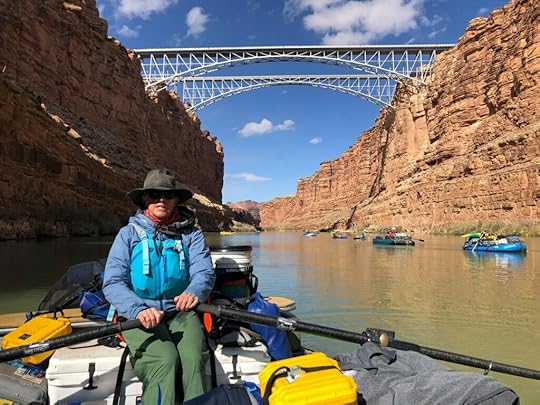 Jennifer at the helm heading out of Lee’s Ferry (credit: Jeff Rhoads)
Jennifer at the helm heading out of Lee’s Ferry (credit: Jeff Rhoads)Nearly every individual in every nation felt the impact of so much disease, destruction and death. Businesses closed, then failed entirely. Markets crashed. Travel all but stopped. Hundreds of millions lost their jobs and, too many, lost their homes and savings. The terminally ill were quarantined in hospital beds with caretakers covered head to foot in PPE, their faces masked, their hands gloved, and all too often the dying said goodbye to loved ones on Zoom and Facetime — sometimes not at all. People lucky enough not to lose someone dear to them still suffered the fear and anxiety that a medically vulnerable friend or family member would become sick, be isolated for days or weeks, and possibly die — alone.
 Vaccination clinic, Salt Lake County (credit: Jennifer Jordan)
Vaccination clinic, Salt Lake County (credit: Jennifer Jordan)A few months into a pandemic that we thought would last weeks, I decided I needed to immerse myself in what would probably be the biggest news story of my journalistic life. So, for nearly a year I worked as a contact tracer and then in the vaccination clinics with the Salt Lake County Health Department. Six days a week I carved a few hours out of my writing work and called the newly-diagnosed. After giving them the bad news, I instructed them how to self-quarantine, not an easy task in a state that prides itself on having the youngest population in the country (i.e., large families). One single mother I spoke to had twelve children, ten of whom were still underage and “not much help” around the house and with the babies. She told me it was virtually impossible for her to stay isolated in her bedroom for two weeks (the CDC quarantine protocol at the time) and have her meals left at the door. She would just have to cope as her kids, one-by-one, caught the virus from her, and thus with every diagnosis extended the household quarantine another two weeks. In several cases, I had to call the same house five or six times as the virus spread from child to parent to siblings to visiting cousins and aunts – all of them instructed to undergo the same two weeks alone in their rooms, if they had separate rooms to go to. It was fascinating, rewarding, and heartbreaking work. Too many times, the new Covid patient would tell me they had already lost family members, almost always the most vulnerable – a sick sibling or older mother, father, or grandparent. And now the virus had found them and they waited to see if it too would take them.
Aside from the unspeakably horrific numbers of the sick and dead that the world has lost, there’s the utter void of the past two years. Normally, a year, even months and weeks, have benchmarks. You remember those – dates in our calendars and by which we noted the passage of time; birthday parties with toasts and silent wishes to make over gleaming cakes, Bar and Bat Mitzvahs in synagogues crammed with every aunt and uncle you ever met and many you never had, anniversary dinners in fancy restaurants, Thanksgiving gatherings around a table crammed with food and faces, Christmas Eve around the tree singing carols with your favorite people in the world, Passover Seders taking turns reciting the Psalms, Easter egg hunts, Fourth of July picnics on blankets waiting for the fireworks to begin, Labor Day neighborhood barbeques before we said goodbye to summer, and those particularly wonderful and wild gatherings that spontaneously happened for no particular reason but that remained etched in your memory…Those and many more benchmarks disappeared for two years as Covid shut the world down. Just last night my sister and I were trying to remember when we’d last seen a mutual friend and we had to add two years to our estimate because we know we didn’t see them during in those 24 months, so it must have been that much farther back. No gatherings, no group celebrations, no surprise birthday parties, no Thanksgiving feasts, no travel to see our distant family or to that business meeting in another state. It’s been a blur of days, weeks and months that all look the same.
Between the Delta and Omicron variants, the Salt Lake County Health Department scaled back its Covid response, and I left the job to refocus on my writing. But as a freelancer, finding creative energy in the amorphous world that Covid had created, one without edges or deadlines or any real structure, has been excruciatingly difficult. Writing is grueling work without a pandemic and writing in the vacuum of a stalled world has been as challenging a professional task as I’ve ever encountered. Notice I’m not saying, “as challenging as I’ve ever overcome,” because that ain’t happened yet. I’m working on it, but every day which remains stuck in the mire of Covid’s murky muck, is another day that I battle to wrest it out of that muck. I’m exhausted. And I’m not alone. I think the world is exhausted. We all need a break. We all need life back — with its benchmarks and birthdays, its travel and family feasts, its celebrations and summers at the beach.
And here we are, a third of the way through 2022. Dare we hope that life will resume if not tomorrow, or next month, then soon?
I named this blog, “Getting Our Groove Back,” so, I hope so. Two years is enough already.
Jennifer Jordan
Salt Lake City
March, 2022
Protected: Getting Our Groove Back
This content is password protected. To view it please enter your password below:
Password:
The post Protected: Getting Our Groove Back appeared first on Liza Rodman.
March 2, 2022
Happy First Anniversary to The Babysitter
One of the most rewarding, if not fun, aspects of having your book actually published, actually out in the world (as opposed to forever languishing on your desktop) is to hear from your readers. You know what you think of your book, but strangers? Random word junkies who just happen to find your book on a shelf and who take the time to share their thoughts? It’s magical, even the harsh reviews—the fact that someone cared enough about your brainchild to craft a reaction—means more than I can say. With The Babysitter, it’s been a particularly exciting and illuminating year since its publication in March of 2021. Liza and I have heard from an incredibly wide gamut of readers—from those who suffered similar childhoods, to True Crime fans who are struck by the unique two-voice narrative, and how it allowed them to both loathe and yet better understand a serial killer.
So, dear readers, please keep the comments coming. We appreciate every single word and thank you for caring enough to share them.
—Jennifer Jordan and Liza Rodman, March 2, 2022
The post Happy First Anniversary to The Babysitter appeared first on Liza Rodman.
January 11, 2022
Prevailing
Writing, filmmaking, and journalism are not jobs for the faint of heart. They often expose you to harsh criticism and sometimes bullying threats. They are occasionally ugly, even brutal. They demand long days and all too often sleepless nights. And they rarely reward with riches. But, they are jobs that need doing and they are jobs that once done and done well, do reward because it means you’ve spoken truth to power.
“Are you sure you want to make this film?”
My friend Sandy Hill looked worried as she asked me the question. Her concern was valid. She knew first-hand about toxic enemies, when the writer Jon Krakauer singled out her and guide Anatoli Boukreev for fault in the 1996 tragedy on Everest in which eight climbers died in a single storm. And here I was, contemplating a film project that would put me directly in his crosshairs.
But, I thought, I will tackle the project in a way she wasn’t able to when she was attacked – I would work as a journalist and approach it as I had every investigation – with cold, hard facts directing my research and determining the narrative. Surely, I wouldn’t, couldn’t, become a target if I stuck to exposing the facts I found. Surely, no one would target me for telling the truth.
However, I knew I would also be taking on one of the largest, most powerful corporations in the world – CBS — and my stomach roiled with Sandy’s question.
I tried to steady my gaze as I replied.
“Yes,” I lied. “I’m sure I want to do this.”
It had begun on April 17, 2011 – the day the CBS program “60 Minutes” broadcast a segment in which they shined their spotlight on renowned philanthropist and bestselling author (“Three Cups of Tea”) Greg Mortenson. The program called him a liar, a fraud, and an all-around charlatan in the writing of his memoir and in the running of his foundation, Central Asia Institute (CAI), a nonprofit NGO dedicated to building schools in some of the most remote and dangerous areas of Pakistan and Afghanistan.
I watched the piece and thought, wait a minute; every story has at least two sides, but the “60 Minutes” report only seemed to have one. For whatever reasons, the program and its producers interviewed only Greg’s critics, chief among them Jon Krakauer. The program didn’t include even one of his defenders or supporters. Not one.
But mostly, the “60 Minutes” report left me confused. I had met Greg in 2000 in Pakistan when he assisted our expedition team with the tricky logistics of travel through the country’s Northwest tribal areas. On that and a subsequent trip to Pakistan, I had seen with my own eyes many of the CAI schools which the report claimed didn’t exist. In 2001, I interviewed Greg after 9-11 about his successful dealings with the Taliban and Al Qaeda. And really, I thought, there are so many easier ways to defraud people of their money than building hundreds of schools in the heart of fundamentalist Islam. What the hell is going on with this report?
That said, I hadn’t seen Greg in years and I didn’t actually know if the accusations were true or false. While the man I had interviewed didn’t appear to possess an ounce of guile or deceit, perhaps fame and money had since corrupted him. So, I decided to do my own investigation into what happened – with Greg, CAI, and the “60 Minutes” report. The result is my documentary, 3000 Cups of Tea which debuted in 2016.
I wish I could say that producing the film was the highpoint of my professional career. I wish I could say that through my exposé “60 Minutes” was forced to issue a rare retraction and an even rarer apology for getting the story and the man so wrong. And mostly I wish I could say Greg and his CAI came through the scandal unscathed and both are still flourishing in their heroic work of educating children and spreading peace “through books and not bombs.”
But that’s not what happened. What happened was that “60 Minutes” and Krakauer unleashed their hounds on me. Through the four years it took to finish the film, I received threats, including Krakauer telling me that I’d “be sorry” if I continued digging where he didn’t want me to dig. He called me a liar on NPR. CBS’s then Vice President of News, Jeff Fager, sent me a veiled Cease and Desist letter, questioning my credentials to challenge their reportage. My email accounts were hacked, one entirely erased of content. Most of my financial backing backed out. Nearly every festival I submitted the film to rejected it – several of the rare few which initially accepted the film, pulled it without explanation. One director said they would open the festival with 3000 Cups of Tea, a rare honor, but only if Greg agreed to appear and “answer to the charges against him.” Feeling like it was a setup, I declined.
And yet, the film has prevailed. It was completed in 2016, it was accepted into many international film festivals far from the reach of those who would silence its message, it won standing ovations and awards. And best of all, it makes me proud to this day.
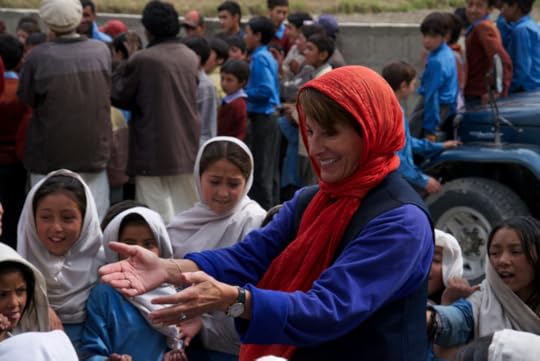
The post Prevailing appeared first on Liza Rodman.
December 29, 2021
Thank You For An Incredible 2021!
It’s been an incredible first year for The Babysitter: My Summers with a Serial Killer. Conceived in 2005 and birthed in 2021, she has exceeded our expectations and despite these uncertain times is faring well out in the world.
In these final days of 2021 (how did that happen?) we’d like to say how grateful we are to ALL of you, our friends and readers, for your unwavering support. Collaboration is at the heart of this book and that collaboration extends to all of you, as well. Thank you.
We can’t wait to see what’s in store for 2022! And remember, the paperback launches (hopefully with an in-person reading and celebration) at East End Books in Provincetown on June 14, 2022.
The Year’s Best #BabysitterBook Moments#1. Jennifer Jordan and I unboxing our first hardcover copies of The Babysitter. #2. The Babysitter launch party with Jennifer Jordan, Helen Fremont, and Brookline Booksmith. #3. The Babysitter was named one of “The Best 10 True Crime Books of 2021” by Marie Claire. #4. The Babysitter was included in the New York Times Book Review’s Annual Summer Reading issue. Dream come true!
#4. The Babysitter was included in the New York Times Book Review’s Annual Summer Reading issue. Dream come true! 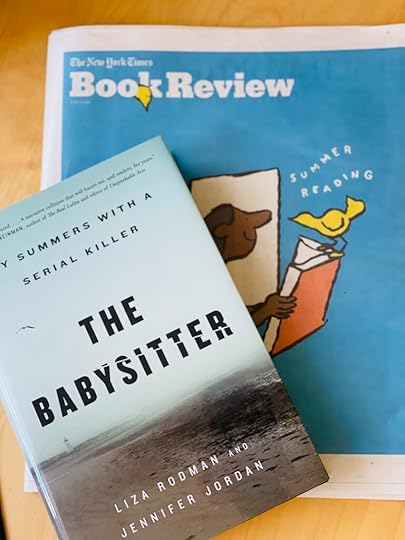 #5. Jennifer and I held our very first in-person book talk at the Marstons Mills Public Library.
#5. Jennifer and I held our very first in-person book talk at the Marstons Mills Public Library. The post Thank You For An Incredible 2021! appeared first on Liza Rodman.
Thank You for an Incredible 2021!
It’s been an incredible first year for The Babysitter: My Summers with a Serial Killer. Conceived in 2005 and birthed in 2021, she has exceeded our expectations and despite these uncertain times is faring well out in the world.
In these final days of 2021 (how did that happen?) we’d like to say how grateful we are to ALL of you, our friends and readers, for your unwavering support. Collaboration is at the heart of this book and that collaboration extends to all of you, as well. Thank you.
We can’t wait to see what’s in store for 2022! And remember, the paperback launches (hopefully with an in-person reading and celebration) at East End Books in Provincetown on June 14, 2022.
The Year’s Best #BabysitterBook Moments#1. Jennifer Jordan and I unboxing our first hardcover copies of The Babysitter. #2. The Babysitter launch party with Jennifer Jordan, Helen Fremont, and Brookline Booksmith. #3. The Babysitter was named one of “The Best 10 True Crime Books for the Year” by Marie Claire. #4. The Babysitter was included in the New York Times Book Review’s Annual Summer Reading issue. Dream come true!
#4. The Babysitter was included in the New York Times Book Review’s Annual Summer Reading issue. Dream come true!  #5. Jennifer and I held our very first in-person book talk at the Marstons Mills Public Library.
#5. Jennifer and I held our very first in-person book talk at the Marstons Mills Public Library. The post Thank You for an Incredible 2021! appeared first on Liza Rodman.
December 14, 2021
The Cape Cod Vampire? Not so fast….
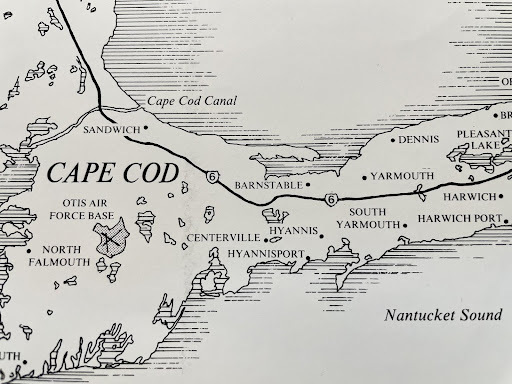
On March 6, 1969, Bristol County District Attorney Edmund Dinis held a press conference at the State Police barracks in South Yarmouth, Massachusetts. He was there to announce the arrest and arraignment of Antone (Tony) Charles Costa, a local handyman from Provincetown. Costa stood accused of the murders of four young women whose mutilated bodies had recently been unearthed off an old fire road, deep in the South Truro woods. A shortcut only locals knew. An old lovers’ lane turned burial ground. The press had been swarming the lower Cape for a month. They rented houses, camped on doorsteps. They were hungry. Dinis’s press conference was huge news.
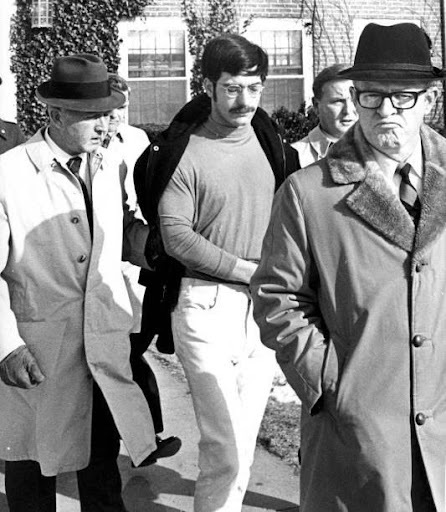 March 6, 1969 Tony Costa leaving the State Police Barracks in South Yarmouth
March 6, 1969 Tony Costa leaving the State Police Barracks in South YarmouthDinis was in a rush that morning and under some pressure. Police had discovered the first body almost by accident a month earlier, on February 8th, and the woman was still unidentified. And now, there were two more young women missing from Providence, Rhode Island, on his docket. Weather permitting, a flank of local police, state police, community volunteers and cadaver dogs would be searching those woods. But it was winter. Everything was slightly frozen on Cape Cod, and the early dark and slanted light streaming through the dense forest upped the creepiness factor for some of the more squeamish local cops.
As far as Dinis was concerned, this was taking too damn long. Especially in an election year. He was feeling the heat. He climbed the stairs to the podium in a flurry of flash bulbs and hushed murmurs. The room fell silent. Dinis announced Costa’s arrest and arraignment on murder charges. He then talked about the victims in a way that would change the Costa case forever.
“The hearts of each girl had been removed from the bodies and were not in the graves…Each body was cut into as many parts as there are joints,” Dinis announced.
He went on to explain to a horrified audience that there were teeth marks on the bodies. Flash bulbs erupted again and everyone started shouting questions. He turned his back and surrendered the podium to State Police Sergeant Bernie Flynn, who would lead the investigation from there.
Fifty years later, we know Dinis, or someone close to him, misread the autopsy reports and confused incised (made with a knife) wounds with incisor (inflicted by teeth) wounds; in fact, there were no teeth marks nor missing hearts. Even so, the press dubbed Costa, the Cape Cod Vampire. An erroneous moniker that sticks to this day. Nearly every day when I open my email in the morning, I’m likely to find yet another new story about Tony Costa, aka the Cape Cod Vampire, circulating online. Between the publication of our book, The Babysitter: My Summers With a Serial Killer, the release of director Ryan Murphy’s American Horror Story Season 10 Red Tide, and a new novel reportedly coming out in 2022 by yet another writer on the bandwagon, Tony Costa’s 1969 killing spree is once again hot news. Problem is, those stories are publishing the same old inaccurate information Edmund Dinis purported back in 1969.
Here’s an example from Decider.com.
In 1969, Antone Charles “Tony” Costa committed several murders around the Massachusetts town of Truro. … Altogether, Costa was suspected of murdering eight women. He would remove the hearts of his victims and chop them up into several pieces. Costa received so much media attention that Kurt Vonnegut actually compared him to Jack the Ripper.
Read the full article .
This is a great story, right? Trouble is, it’s full of misinformation and half truths from old newspapers and dated online sources. As are nearly all of the recent stories. I have not found one that’s accurate. In addition, it seems no one interviewed Ryan Murphy or anyone from the AHS team. There’s no confirmation that the new season of AHS is based on or even inspired by Costa. It’s all speculation.
Here are a couple more examples;
“The Crazy True Story of The Cape Cod Vampire“, District Chronicles
Or “American Horror Story season 10 is inspired by a disturbing true story”, Digital Spy
Even Harper’s Bazaar got in on the act on October 23, 2021, publishing this piece titled, “American Horror Story: Double Feature: Every Easter Egg and Horror Reference So Far“.
But this one is my favorite:
“Kurt Vonnegut’s Strange Connection to the Cape Cod Cannibal“, Mental Floss
At least in the Mental Floss article, the author suggests The Babysitter as the best new source for information on the Costa case. I spent fifteen years researching my book alone and three more in collaboration with Jennifer Jordan after she came on board. I turned over as many stones as there were to turn. I held a pack of Tony Costa’s Dentyne gum in my hands. It still smelled of cinnamon.
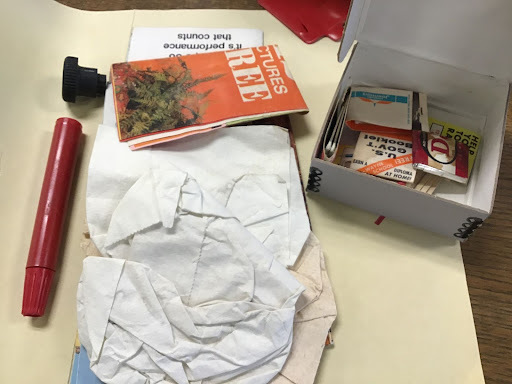 Dentyne gum from Kent State University Special Collections Library
Dentyne gum from Kent State University Special Collections LibraryI flipped through the pages of the book Tony was reading, The Science of Being And Art of Living, when he was arrested. He set it down to answer the doorbell for the Police. The top of a torn matchbook cover still marking his place.
 Book cover from the evidence boxes at Kent State University Special Collections Library
Book cover from the evidence boxes at Kent State University Special Collections LibraryTony Costa was not the Cape Cod Vampire, nor was he the Cape Cod Cannibal or the Cape Cod Casanova. He was a murdering psychopath who compulsively dismembered his victims. He ruined the lives of his victims, their families, and the lives of members of his own family. He blamed himself for his mother’s sudden death in 1969. He was right to do so. He was a necrophiliac. And he was a very, very sick man. He was also a husband, a father, a son, a brother and a well known and often liked member of a small New England town. A town and its people that would see no end to the trauma caused by his crimes. If we want to fully understand this story, or any other, we have to be able to hold both the good and the evil in our hands.
This reality makes the glibness of these inaccurate nicknames infuriating. Reprinting erroneous information from 1969 is not the job of any journalist or nonfiction writer.. If we write that it’s true, we’d better have flushed it out. I am stunned to see the inflammatory nonsense back in print in 2021. No forethought and no accounting. Just a continuation of old mistakes.
In this age of misinformation we simply must call on one another to do better. Better work, better research, better writing. During the writing of The Babysitter, we asked ourselves, sometimes multiple times a day, “Yes, but is it true?” I think we owe it to ourselves and each other to keep asking.
The post The Cape Cod Vampire? Not so fast…. appeared first on Liza Rodman.



